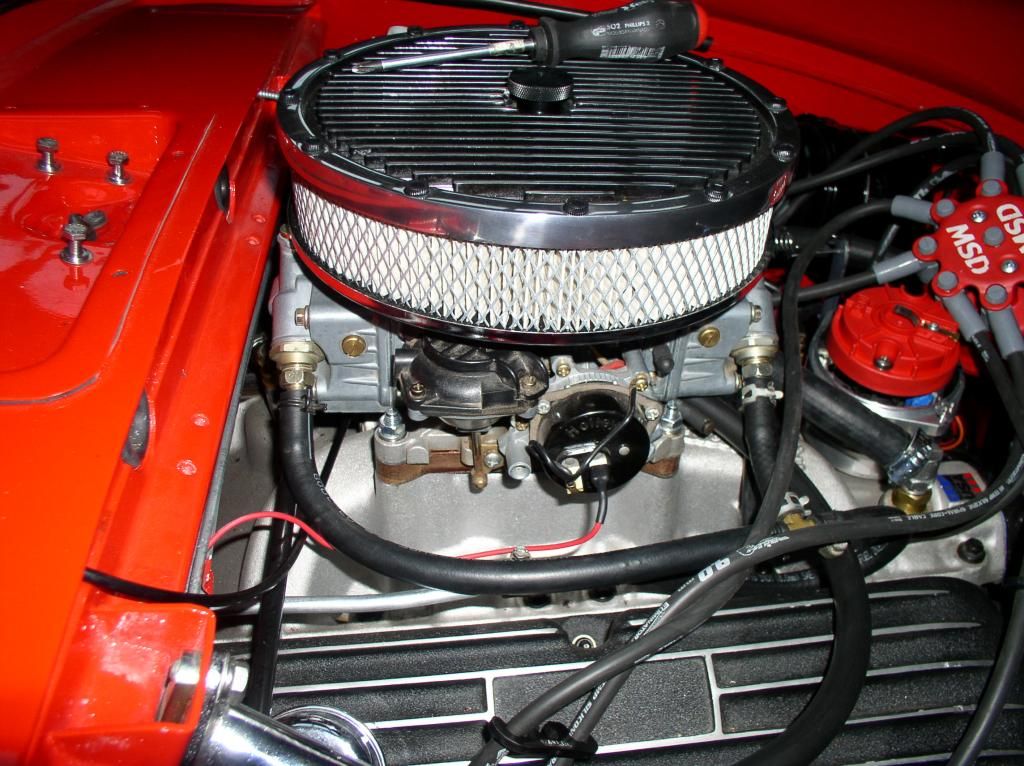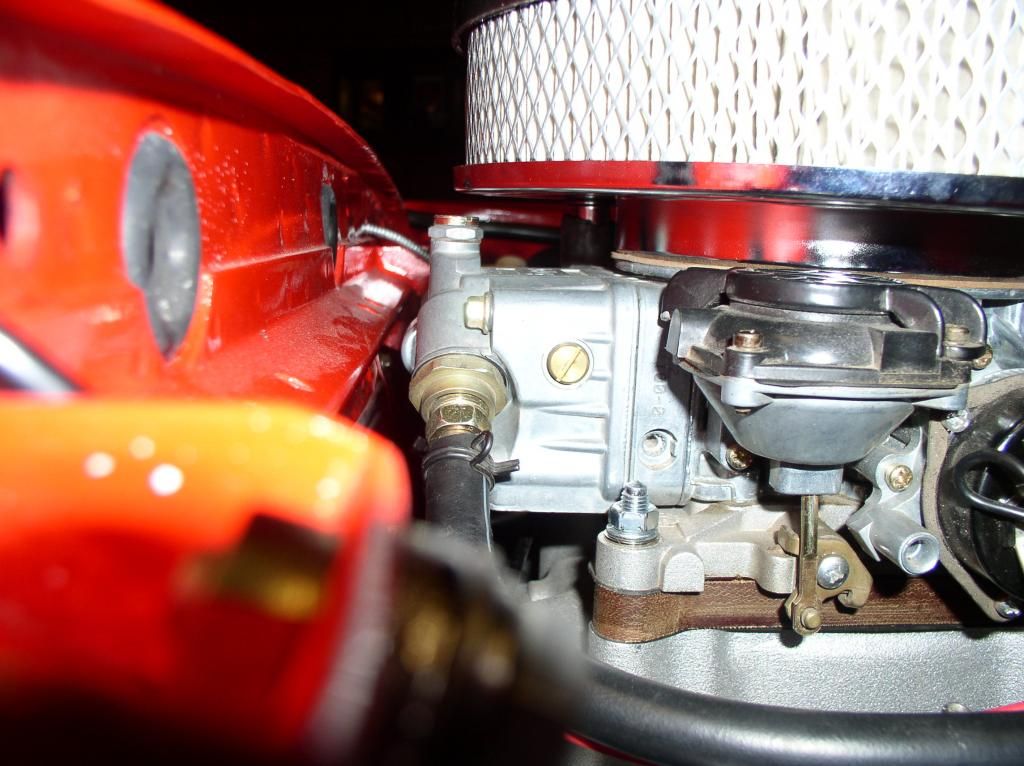cadreamn67
Platinum Forum Member
- Messages
- 608
My new 670 cfm Holley Street Avenger carb will not fit on new Weiand Stealth manifold with new 347 motor installed. It fails to clear the rear of the engine bay by about 5/32 inch (half the thickness of a 5/16 carb mounting stud). Problem is the nub on the back of the secondary center hung float bowl. I do not want to notch the sheet metal. Here is my work around solution. Does anyone see any problems?
BTW, I have given Holley tech assistance three chances to help me. I am still waiting over a week since sending the third reply. At this point I think they are just ignoring me. To say they are incompetent is being way too kind.
My solution is to replace the center hung float secondary with a side hung float bowl. Gaskets and bolt pattern are the same for both.
To get the inlet on the same side as the avenger's primary, I am using a primary bowl from a 600cfm carb.
The 600cfm's primary cross tube port for feeding the 600 cfm secondary was hand tapped with a 1/8 pipe thread tap and the hole plugged.
A Fragola 90 degree fuel line adapter was used to connect a 3/8 fuel line hose to the side hung bowl. The front center hung float bowl is already set up for a 3/8 hose inlet. (I have run 3/8 line from the rear tanks and have a new Holley 125 pump in the trunk for delivery.)
The side hung bowl has its sight plug hole about 1/16 higher than the hole in the center hung float bowl, measured from the bowl floor. I intend to set the float in the new secondary at about 1/16 inch below the bottom of the sight plug hole in an abundance of caution.
Holley claims their center hung bowls have a 20 percent larger fuel capacity than the side hung bowls. I intend to use a 1.20 needle valve in the smaller secondary bowl and keep the 1.10 needle in the front bowl. Theory is that the 10 percent bigger needle in the now smaller secondary will help it refill faster than the primary, somewhat offsetting smaller capacity in any extended WOT condition.
I am also installing "whistles" in both front and rear metering blocks to deal with any potential fuel sloshing under hard acceleration and braking.
Does anyone see anything I have missed taking into account, or created a problem with in all of this?
Thanks in advance for any and all feedback.
Pics below.
Gene
BTW, I have given Holley tech assistance three chances to help me. I am still waiting over a week since sending the third reply. At this point I think they are just ignoring me. To say they are incompetent is being way too kind.
My solution is to replace the center hung float secondary with a side hung float bowl. Gaskets and bolt pattern are the same for both.
To get the inlet on the same side as the avenger's primary, I am using a primary bowl from a 600cfm carb.
The 600cfm's primary cross tube port for feeding the 600 cfm secondary was hand tapped with a 1/8 pipe thread tap and the hole plugged.
A Fragola 90 degree fuel line adapter was used to connect a 3/8 fuel line hose to the side hung bowl. The front center hung float bowl is already set up for a 3/8 hose inlet. (I have run 3/8 line from the rear tanks and have a new Holley 125 pump in the trunk for delivery.)
The side hung bowl has its sight plug hole about 1/16 higher than the hole in the center hung float bowl, measured from the bowl floor. I intend to set the float in the new secondary at about 1/16 inch below the bottom of the sight plug hole in an abundance of caution.
Holley claims their center hung bowls have a 20 percent larger fuel capacity than the side hung bowls. I intend to use a 1.20 needle valve in the smaller secondary bowl and keep the 1.10 needle in the front bowl. Theory is that the 10 percent bigger needle in the now smaller secondary will help it refill faster than the primary, somewhat offsetting smaller capacity in any extended WOT condition.
I am also installing "whistles" in both front and rear metering blocks to deal with any potential fuel sloshing under hard acceleration and braking.
Does anyone see anything I have missed taking into account, or created a problem with in all of this?
Thanks in advance for any and all feedback.
Pics below.
Gene
Last edited:







